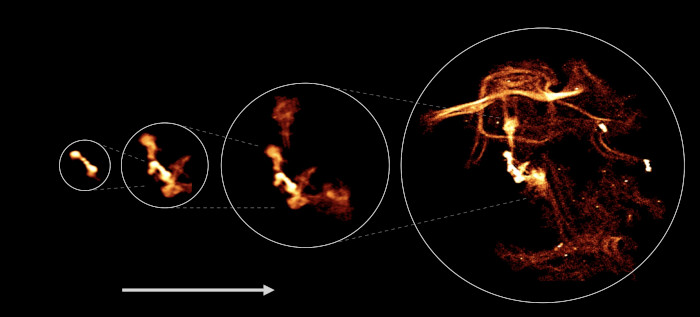
Glass bubbles from black hole
LoFar is a radiotelescope that collects radiation produced by the oldest electrons that are in the neighbour of a cosmic object. In this way researchers can go literally back in time along the story of Nest200047*.
During its phases of activity, the black hole devours the surrounding material and in this process releases a large amount of energy, sometimes even in the form of jets of particles that move at the speed of light and emit radio waves. These jets generate bubbles of particles and magnetic fields which by expanding are able to heat and move the intergalactic medium that surrounds them, enormously influencing its evolution and therefore the rate at which stars are formed.

Back in time with the black hole
Researchers believe these filaments are the remnants of the first bubbles produced hundreds of millions of years ago by the black hole at the center of Nest200047 and are now breaking apart and mixing with the intergalactic medium. The study of these structures in the future will reveal important new details on the physical properties of intergalactic matter and on the physical mechanism that regulates the transfer of energy from bubbles to the external environment.
Brienza, M., Shimwell, T.W., de Gasperin, F. et al. A snapshot of the oldest active galactic nuclei feedback phases. Nat Astron (2021). doi:10.1038/s41550-021-01491-0

No comments:
Post a Comment
Markup Key:
- <b>bold</b> = bold
- <i>italic</i> = italic
- <a href="http://www.fieldofscience.com/">FoS</a> = FoS